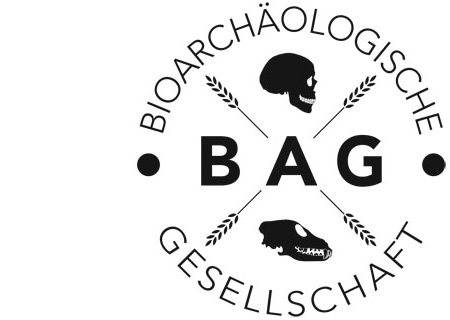
- Diese Veranstaltung hat bereits stattgefunden.
Verleihung des BAG-Förderpreises 2021, Kategorie Dissertation
8. November 2022

Der BAG-Förderpreis 2021 für Dissertationen wurde heute an Lukas Waltenberger, BSc, MSc, PhD, Österreichisches Archäologisches Institut (ÖAI) der Österreichischen Akademie der Wissenschaften (ÖAW), verliehen. Der Vorstand der BAG gratuliert aufs Herzlichste!
Titel der Abschlussarbeit
Parturition scars as evidence of birth? A geometric morphometric reappraisal of pelvic features
Abstract
| Beckenmerkmale, die meist als Geburtsnarben bezeichnet werden, sind in den letzten fünfzig Jahren häufig untersucht worden. Sie befinden sich häufig in der Nähe des Iliosakralgelenks (Sulcus präauricularis, Furche margo auricularis, Furche interosseus, präaurikuläre Erweiterungen) oder an den Schambeinen (dorsale Schambeingrübchen, ventrale Schambeingrübchen, verlängerte Schambeinhöcker, Exostosen an der Pektinuslinie). Viele veröffentlichte Artikel kamen zu nicht schlüssigen Ergebnissen über den Zusammenhang von Beckenmerkmalen mit der Geburt, da sich Beckenmerkmale auch bei nulliparen Frauen und sogar bei Männern entwickeln (z. B. Cox 1989). Neben Schwangerschaft und Geburt stehen auch andere Faktoren wie Hormonstatus, biomechanische Belastung, Körpergröße, Körpergewicht oder Alter im Verdacht, die Ausprägung von Beckenmerkmalen zu beeinflussen (z. B. Maass 2012), aber diese Effekte wurden nur selten untersucht. In meiner Dissertation habe ich den Zusammenhang von Beckenmerkmalen mit verschiedenen möglichen Ursachen sowie mit der Beckenform untersucht. Das Becken überträgt ständig das Körpergewicht vom Rumpf auf die Beine und ist daher einer erheblichen biomechanischen Belastung ausgesetzt. Da die Beanspruchung der Knochen häufig zu einem Knochenumbau führt, nahm ich an, dass die Entwicklung von Beckenmerkmalen und der Umbau der Beckenform sowohl während des Wachstums als auch im Erwachsenenalter stattfinden. In einer ersten methodischen Studie testete ich verschiedene photogrammetrische Softwarepakete und verglich die Ergebnisse von CT-Scans, strukturiertem 3D-Licht-Scanning, Photogrammetrie und Microscribe Digitizer. In dieser Studie verwendete ich drei verschiedene Proben, eine österreichische Probe aus der Bronzezeit, eine Probe aus dem 19. Jahrhundert aus Österreich und moderne CT-Daten aus New Mexico, USA, und erstellte Richtlinien für die Verwendung der Photogrammetrie zur Erstellung von 3D-Oberflächennetzen von artikulierten Pelves für die weitere Analyse. Anschließend analysierte ich die Variation der Beckenform im Erwachsenenalter und verglich diese Daten mit der Ausprägung der Beckenmerkmale im Erwachsenenalter unter Verwendung von Landmark-Daten und geometrisch-morphometrischen Methoden (Hauptkomponentenanalyse, Partial Least Squares Analysis, multivariate lineare Regression und Procrustes ANOVA), einem Algorithmus für gleitende Mittelwerte und multipler Regression. Meine Ergebnisse deuten auf ein komplexes Assoziationsmuster verschiedener Faktoren hin, wie z. B. die Anzahl der Geburten, das Körpergewicht, die Statur, das Alter und der Zentrum-Collum-Diaphysen-Winkel (CCD-Winkel). Nur die dorsale Schambeinfurche stand in signifikantem Zusammenhang mit Schwangerschaft und Geburt, woraufhin ich eine Formel zur Vorhersage der Anzahl der Geburten anhand von Trockenknochenmaterial entwickelte. Obwohl dieser Ansatz für die Vorhersage von Einzelindividuen nicht zuverlässig ist, hat er das Potenzial, die durchschnittliche Anzahl von Geburtsereignissen zwischen verschiedenen Populationen zu vergleichen. Darüber hinaus waren der Sulcus präauricularis und die Furche margo auricularis signifikant mit der Beckenform assoziiert, insbesondere mit einer retrovertierten Hüftpfanne, was zeigt, dass einige Beckenmerkmale eher mit biomechanischer Belastung und Alterung als mit Geburtsstress zusammenhängen. Die Analyse der Formveränderungen des Beckens im Erwachsenenalter zeigte, dass die Formveränderungen bei Männern relativ stabil blieben und zwei ähnliche Phasen des Umbaus auftraten, während bei Frauen drei verschiedene Phasen des Formwandels zu beobachten waren, die eine Kombination aus hormonbedingtem und stressbedingtem Knochenumbau während und nach der Fortpflanzungszeit widerspiegeln. Schließlich liefern Photogrammetrie, CT-Scanning und 3D-Scanner mit strukturiertem Licht vergleichbare Oberflächennetze. Allerdings erfordert die Photogrammetrie viel Training, um qualitativ hochwertige Oberflächennetze zu erstellen. Die Ergebnisse dieser Arbeit deuten darauf hin, dass die Auswirkungen einzelner kausaler Faktoren auf die Ausprägung von Beckenmerkmalen gering sind, aber es besteht tatsächlich ein Zusammenhang zwischen einigen Beckenmerkmalen und Schwangerschaft und Geburt. Durch einen multivariaten Ansatz und umfangreiche Stichproben konnte ich die verschiedenen Faktoren entflechten und die Möglichkeiten und Grenzen von Beckenmerkmalen in bioarchäologischen und forensischen Anwendungen aufzeigen. | Pelvic features, mostly known as parturition scars, have been frequently studied in the last fifty years. They are commonly located close to the sacroiliac joint (preauricular sulcus, margo auricularis groove, interosseus groove, preauricular extensions), or at the pubic bones (dorsal pubic pitting, ventral pubic pitting, extended pubic tubercle, exostoses at the pectineal line). Many published articles came to inconclusive results about the association of pelvic features with birth because pelvic features also develop in nulliparous females and even in males (e.g., Cox 1989). Besides pregnancy and birth, other factors such as hormonal status, biomechanical strain, body height, body weight, or age are suspected to influence the expression of pelvic features (e.g., Maass 2012), but these effects were rarely tested. In my dissertation, I assessed the association of pelvic features with various potential causes as well as with pelvic shape. The pelvis constantly transfers body weight from the trunk to the legs and therefore experiences considerable biomechanical strain. Because stress to bones often causes bone remodelling, I assumed that the development of pelvic features and shape remodelling co-occur during growth as well as during adulthood. In a first methodological study, I tested several photogrammetric software packages and compared results obtained by CT scanning, 3D structured light scanning, photogrammetry, and Microscribe Digitizer. In this study, I used three different samples, an Austrian Bronze Age sample, a 19th century sample from Austria, and modern CT data from New Mexico, USA, and provided guidelines about the use of photogrammetry to create 3D surface meshes of articulated pelves for further analysis. Subsequently, I analysed adult pelvic shape variation and compared this data with the expression of pelvic features in adulthood using landmark data and geometric morphometric methods (Principal component analysis, Partial Least Squares Analysis, Multivariate Linear Regression, and Procrustes ANOVA), a moving average algorithm, and multiple regression. My results indicate a complex pattern of association of various factors, such as the number of births, body weight, stature, age, and centrum-collum-diaphyseal angle (CCD-angle). Only dorsal pubic pitting was significantly associated with pregnancy and birth, which I then used to develop a formula to predict the number of birth events from dry bone material. Although, this approach is not reliable for the prediction of single individuals, it has potential to compare the average number of birth events between different populations. Furthermore, the preauricular sulcus and margo auricularis groove were significantly associated with pelvic shape, particularly with a retroverted acetabulum, showing that some pelvic features are more related to biomechanical stress and aging than to birth stress. The analysis of pelvic shape changes during adulthood showed that shape changes remained relatively stable in males with two similar phases of remodelling, three different phases of shape change were observable in females, reflecting a combination of hormone-driven and stress-related bone remodelling during and after the reproductive period. Finally, photogrammetry, CT scanning and 3D structured light scanner provide comparable surface meshes. However, photogrammetry needs lot of training to produce high quality surface meshes. The results of this thesis indicate that the effect of single causal factors on the expression of pelvic features are small, but there is indeed an association of some pelvic features with pregnancy and birth. By a multivariate approach and comprehensive samples, I was able to disentangles the various factors and show the possibilities and limitations of pelvic features in bioarcheological and forensic applications. |
Details
- Datum:
- 8. November 2022
- Veranstaltungskategorien:
- foerderpreis, intern
Veranstaltungsort
- online
Veranstalter
- Bioarchäologische Gesellschaft Österreichs
- info@bag.or.at
- Veranstalter-Website anzeigen
